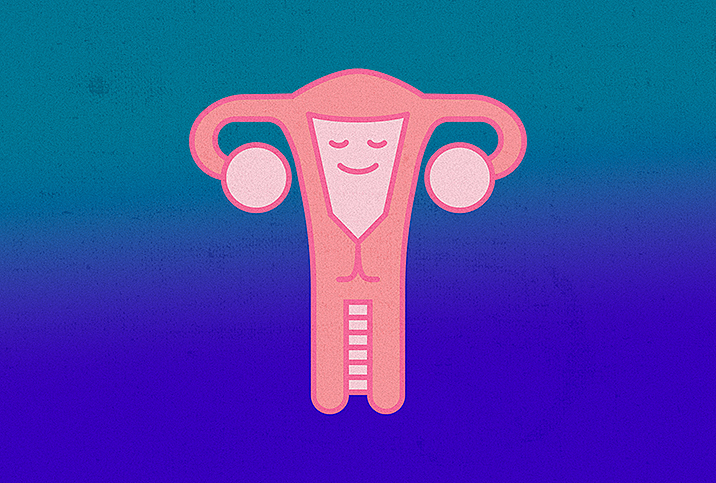Your Mental Health at Work, Part I: The Challenges

Individuals experiencing problems with mental health can miss an average of 10 to 12 workdays per year and suffer 14 to 18 days of reduced productivity. This isn't even to mention the impact work stress and burnout can have on your home life and health.
The National Institute of Mental Health reports that in 2020, about 52.9 million adults ages 18 or older in the United States had a mental, behavioral or emotional disorder. In the same year, the Centers for Disease Control and Prevention (CDC) stated 41.5 percent of adults reported recent symptoms of anxiety or a depressive disorder.
"We know that mental health is vastly underreported," said Mona Eshaiker, a licensed therapist and mental health and diversity advisor at The Rise Journey in New York City. "So although these numbers seem high, we can assume the reality of the problem is even higher."
The challenge to feel emotionally well at work
Janet Philbin is a licensed clinical social worker and certified hypnotherapist in Hauppague, New York, and author of "Show Up For Yourself: A Guide to Inner Awareness and Growth." She said life doesn't just stop because we go to work.
"All of us have arrived where we are in our lives carrying the emotional baggage of the past," Philbin said. "We carry these bags everywhere we go, including work. And sometimes, we just can't bear the weight of them any longer."
She said this experience can lead to depression, anxiety, loneliness, fear, isolation and poor work performance.
Additionally, the COVID-19 pandemic we've faced for the past two years has caused unprecedented disruption to life and presented a mental health crisis that employers need to acknowledge and address. The Harvard Business Review found 76 percent of workers reported a mental health symptom in 2020. The research also indicated 91 percent of respondents believed a company's culture should support mental health.
Philbin noted that employers also need to be aware of and help employees with burnout. Psychologists Christina Maslach and Michael P. Leiter, in a study published in 2016 in the World Psychiatry journal, defined burnout as: "a psychological syndrome emerging as a prolonged response to chronic interpersonal stressors on the job. The three key dimensions of this response are an overwhelming exhaustion, feelings of cynicism and detachment from the job, and a sense of ineffectiveness and lack of accomplishment."
"Due to COVID-19, burnout is affecting everyone," Eshaiker said. "But we also know burnout is disproportionately affecting women and underrepresented minorities: Black and Indigenous people of color, people with disabilities and the LGBTQIA+ community."
Published in 2021 by the McKinsey Institute, "The Women in the Workplace Report" highlighted the burnout gap between women and men, which doubled compared to the previous annual report. The authors proposed the difference was because women are more likely to be caretaking for children, homeschooling or looking after aging relatives alongside their work roles. According to the report, 1 in 3 women has considered leaving the workforce or downshifting their career in the previous year. This figure has increased from the 1 in 4 rate reported during the first few months of the pandemic.
One positive from the past two years has been an increase in attention to diversity, equity and inclusion in the workplace, but Eshaiker said: "A lot of these efforts are down to women leaders, and compared to men at the same level, women are doing more to support their teams in these areas. In turn, the extra workload leads to added stress, contributing to burnout."
Living in a pandemic has increased everyone's stress levels and exacerbated the mental health challenges workplaces were already facing. The workplace has changed forever. We have learned to work flexibly, remotely, with fewer resources and fewer staff members—all with added life stressors. But just as our working patterns have evolved, so should mental health awareness and support.
More companies need to address mental health
According to the World Health Organization, depression and anxiety disorders cost the global economy an estimated $1 trillion per year in lost productivity. The same report states that for every $1 put into treatment for common mental disorders, there is a return of $4 in improved health and productivity.
Eshaiker explained why this cost-benefit analysis works the way it does.
"Company culture is a big reason why people work hard, are engaged at work and stay with a company," Eshaiker said. "It is a shared responsibility, but it does start at the top."
"When companies provide support, they let their employees know that their emotional and mental health matter as much as productivity," Philbin noted. "When people feel cared about and supported, they will miss fewer days at work due to mental health issues and have fewer conflicts in the workplace."
Research confirms these statements with a 2019 meta-analysis of 82,248 businesses indicating higher employee well-being was associated with higher productivity and organizational performance. According to the mental health charity Mind, based in England and Wales, companies in the Financial Times Stock Exchange 100 that prioritize employee engagement and well-being outperform their FTSE peers by 10 percent.
"When people gain agency and feel competent in their ability to manage their emotions and improve their coping skills, their mood will improve, and the improved mood will also translate into doing better at work," Philbin said.
What employers and managers can do
"Having real conversations about mental health, broaching the subject and not expecting your employees to come to you first about their mental health is a great place to start building a positive company culture," Eshaiker advised.
Julie McIntosh, chief culture officer at Kura, a customer service outsourcing company in the United Kingdom, suggested holding regular check-ins with employees.
"Sometimes, it can be hard to spot a struggling employee," she said. "This is especially true if you have a remote or hybrid workforce, which many businesses now do.
"Your people may not feel confident enough to approach you, especially about personal matters, so it's essential to check in with them regularly to see how they're doing," she added. "Video-calling your remote employees will help to make the experience more personable. For office-based employees or remote workers who live nearby, arranging to meet at a café outside of the office can provide a more relaxing setting."
According to Eshaiker, encouraging your staff to have boundaries and breaks is another essential aspect of managing mental health in the workplace.
'Your people may not feel confident enough to approach you, especially about personal matters, so it's essential to check in with them regularly to see how they're doing.'
"I cannot emphasize the importance of breaks," she said. "We need spaces in the workday to pause and reflect. If we are constantly on the go, it disrupts our working memory and cognitive faculties, and we cannot process information well."
Leaders should ask their staff members if they took a break, encourage regular short breaks and ensure people get their lunchtime. Although breaks may seem counterproductive, they actually have the opposite effect.
"Instead of just crashing and becoming disengaged from work overload, the more you rest and are able to process information, the more creative and motivated you become, leading to increased productivity," Eshaiker explained.
"If you think you haven't got time for a five-minute break, it's time to take 20 minutes," said Jamie Farr, well-being trainer and coach at YourNorth in Wales, who emphasized that the work environment must promote a culture that encourages open discussion about mental health. "If you have a culture that is good and transparent, people will talk. If people feel confident and safe, they will talk. If they feel supported in the workplace, they will talk.
"There isn't enough education about well-being," Farr continued. "Yes, lots of companies are providing free well-being initiatives, but there is so much available it becomes diluted, and people don't always understand what it is or what will benefit them. Education about well-being, how to listen to your internal dialogue, and how to recognize when you need support is key for well-being initiatives to be effective."




















